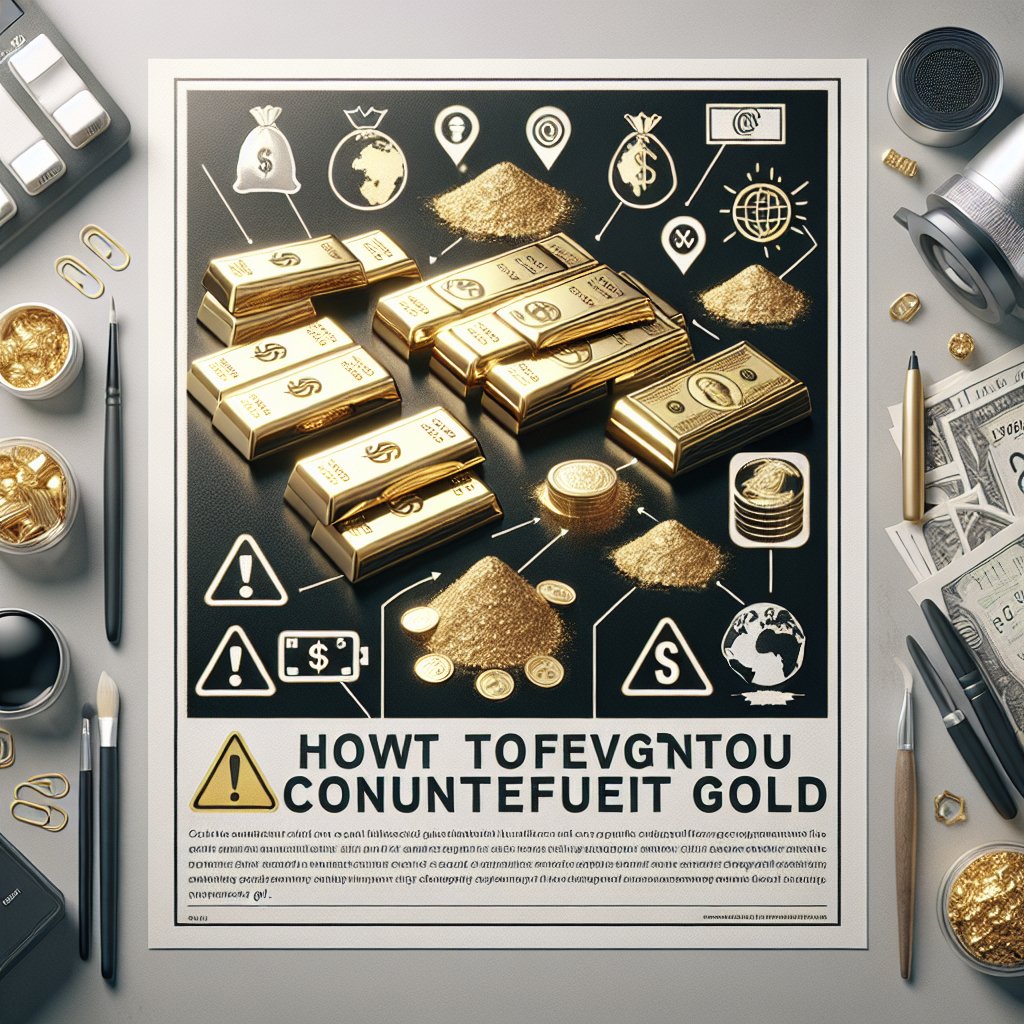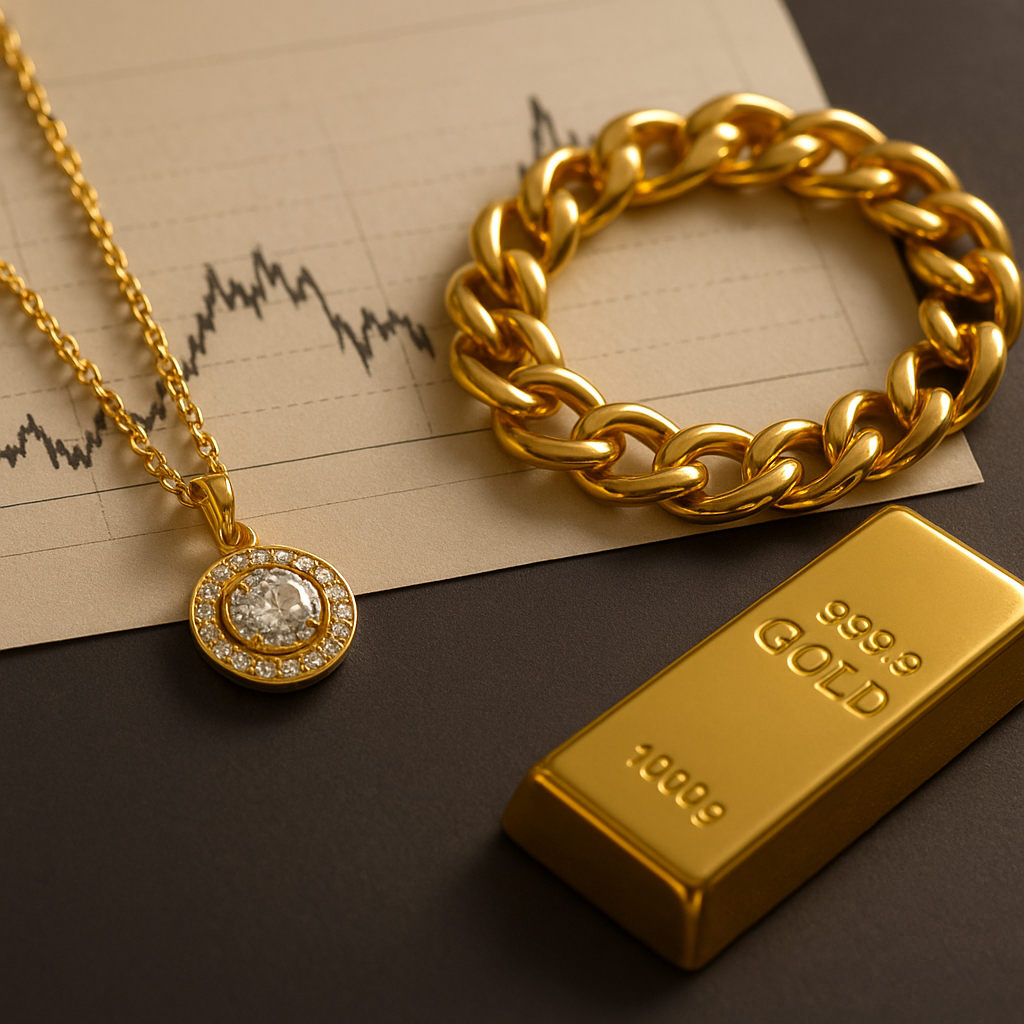Gold has long been considered a safe haven for investors, a tangible asset that holds intrinsic value and offers a hedge against inflation and economic uncertainty. However, with the allure of gold comes the risk of encountering counterfeit products and fraudulent schemes. Understanding how to spot fake gold and avoid investment scams is crucial for anyone looking to invest in this precious metal.
Understanding the Basics of Gold Authenticity
Before delving into the methods of identifying fake gold, it’s essential to understand what constitutes genuine gold. Gold is a chemical element with the symbol Au and atomic number 79. It is a dense, soft, malleable, and ductile metal with a bright yellow color and luster. The purity of gold is measured in karats, with 24 karats representing pure gold. However, pure gold is often too soft for practical use, so it is alloyed with other metals to increase its strength and durability.
When purchasing gold, whether in the form of jewelry, coins, or bars, it’s important to verify its authenticity. This can be done through various methods, including visual inspection, weight measurement, and chemical testing. Each method has its advantages and limitations, and a combination of these techniques often provides the most reliable results.
Visual Inspection
One of the simplest ways to assess the authenticity of gold is through visual inspection. Genuine gold items typically have a hallmark or stamp indicating their purity, such as “24K” or “18K.” These markings are usually found in inconspicuous places, such as the inside of a ring or the edge of a coin. However, counterfeiters can also replicate these stamps, so it’s important to look for other signs of authenticity.
Examine the item for any discoloration or tarnishing, as genuine gold does not tarnish or corrode. Additionally, check for any visible seams or joints, which may indicate that the item is gold-plated rather than solid gold. A magnifying glass can be helpful in identifying these subtle details.
Weight and Density
Gold is a dense metal, and its weight can be a good indicator of authenticity. Use a precise scale to weigh the item and compare it to the expected weight for its size and purity. For example, a standard 1-ounce gold coin should weigh approximately 31.1 grams. If the item is significantly lighter than expected, it may be counterfeit or made from a less dense metal.
Another method to assess density is the water displacement test. Submerge the item in water and measure the volume of water displaced. Compare this to the item’s weight to calculate its density. Genuine gold has a density of approximately 19.3 grams per cubic centimeter, so any significant deviation from this value may indicate a fake.
Chemical Testing
Chemical testing, also known as acid testing, is a more definitive method for verifying gold authenticity. This involves applying a small drop of acid to the item and observing the reaction. Different acids are used for different karat levels, and the reaction can indicate the purity of the gold. However, this method can damage the item, so it should be used with caution and preferably on a small, inconspicuous area.
Professional jewelers and gold dealers often use electronic gold testers, which provide a non-destructive way to assess gold purity. These devices measure the electrical conductivity of the metal, which varies with its composition. While electronic testers are more expensive than acid testing kits, they offer a quick and reliable way to verify gold authenticity.
Avoiding Gold Investment Scams
In addition to counterfeit gold products, investors must also be wary of scams and fraudulent schemes in the gold market. These scams can take many forms, from fake gold mines to Ponzi schemes promising high returns. To protect yourself from these risks, it’s important to conduct thorough research and exercise due diligence before making any investment.
Research and Verification
Before investing in gold, take the time to research the company or individual offering the investment. Look for reviews and testimonials from other investors, and verify the company’s credentials with relevant regulatory bodies. Be cautious of companies that make unrealistic promises or pressure you to invest quickly, as these are common red flags for scams.
Verify the authenticity of any gold products you are considering purchasing. Request documentation, such as assay certificates or proof of origin, and confirm their validity with independent sources. If possible, have the gold independently appraised by a reputable jeweler or gold dealer.
Understanding Market Dynamics
Understanding the dynamics of the gold market can also help you avoid scams. Gold prices are influenced by a variety of factors, including supply and demand, geopolitical events, and economic indicators. Be wary of investment opportunities that claim to offer guaranteed returns, as the gold market is inherently volatile and subject to fluctuations.
Stay informed about current market trends and developments, and consider seeking advice from financial professionals with expertise in precious metals. Diversifying your investment portfolio can also help mitigate risks and protect your assets from market volatility.
Recognizing Common Scams
Familiarize yourself with common gold investment scams to better recognize and avoid them. Some of the most prevalent scams include:
- Ponzi Schemes: These scams promise high returns with little risk, using funds from new investors to pay returns to earlier investors. Eventually, the scheme collapses, leaving most investors with significant losses.
- Fake Gold Mines: Scammers may claim to have discovered a new gold mine and solicit investments to fund its development. In reality, the mine may not exist, or the gold reserves may be vastly overstated.
- Unregulated Gold Dealers: Some dealers may sell counterfeit or low-quality gold products at inflated prices. Always verify the dealer’s credentials and reputation before making a purchase.
By staying vigilant and informed, you can protect yourself from fake gold and investment scams, ensuring that your gold investments are both genuine and secure.












